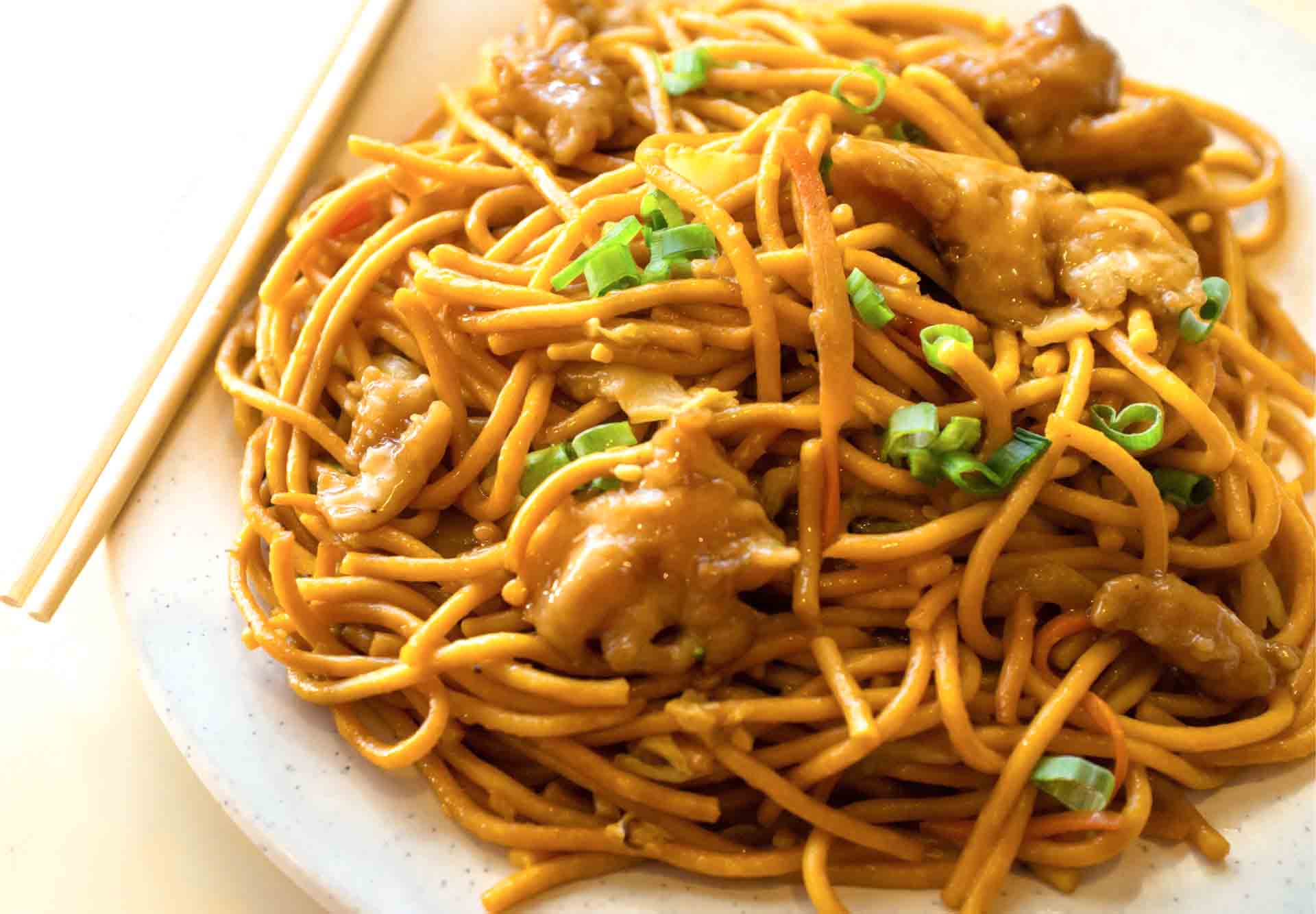Since Char Siu roast pork is typically exclusively seen in Chinese restaurants, home cooks often pass up the opportunity to make Roast Pork Lo Mein.
------Advertisement-----
However, we do have a fantastic recipe for char siu, and many of you are already making it at home and storing it in the freezer for use in dishes like pork fried rice, roast pork with Chinese veggies, and even lo mein.
The char siu’s flavorful marinade elevates the dish as a whole. If you like pork, you’ll adore this lo mein recipe, and it’s easy to make at home.
------Advertisement-----
The Art of Acquiring Char Siu Roast Pork
Most restaurants that serve Cantonese roast meats will sell their meat by the pound.
Roast ducks, pigs, spareribs, and soy sauce chicken, all hanging in the shop front ready to be sliced up and packaged for takeout, are hard to miss.
------Advertisement-----
We know that most people don’t have access to a Cantonese roast meat establishment, so we’ve posted our family’s tried-and-true roast pork recipe here on the blog. Our char siu recipe has been consistently rated 5 stars, as far as I can recall.
If you prepare a lot of char siu at home, you’ll have plenty to use in other dishes, like this Roast Pork Lo Mein, Char Siu Bao, and Stir-Fried Roast Pork with Chinese Vegetables.
Char siu can be stored in the freezer until it is ready to be used. Just let it thaw out when you’re ready to use it.
How to Make Chinese Lo Mein from Scratch
We have provided nearly every possible lo mein recipe throughout the years. One of lo mein’s many charms, though, is that it’s perfect for using up random ingredients lurking in the back of the fridge.
When we only have a few little meat and vegetable scraps left, we whip up a batch of lo mein. When you have mastered the fundamentals of a recipe, you can use it to make nearly any dish you can imagine.
Vegetables and protein are julienned, and then sliced protein and noodles are added.
Once you get a handle on the method, feel free to swap ingredients and try new protein and vegetable combos.
INGREDIENTS:
FOR THE SAUCE MIXTURE:
- 1 tablespoon of oyster sauce
- 1 tablespoon of hot water
- 1 tablespoon of light soy sauce
- 2 teaspoons of dark soy sauce
- 1/2 teaspoon of salt
- 1/2 teaspoon of sesame oil
- 1/4 teaspoon of sugar
- 1/8 teaspoon of ground white pepper
FOR THE REST OF THE DISH:
- 14 ounces of cooked lo mein noodles
- 8 ounces of julienned into strips Chinese roast pork
- 2 julienned scallions
- 1 clove of minced garlic
- 2 1/4 cups of shredded napa cabbage
- 1 1/2 cups of mung bean sprouts
- 1 1/2 tablespoons of vegetable oil
- 1 tablespoon of Shaoxing wine
- 1/2 cup of sliced water chestnuts
- 1/2 cup of sliced into bite-sized pieces canned bamboo shoots
- 2/3 cup of snow peas
- 1/2 cup of sliced mushrooms
- 1/4 cup of julienned carrot
INSTRUCTIONS:
- In a small bowl, combine the light soy sauce, oyster sauce, dark soy sauce, hot water, white pepper, sugar, salt, and sesame oil. Place aside.
- Get the roast pork/char siu, garlic, and vegetables (carrots, bamboo shoots, mushrooms, water chestnuts, snow peas, napa cabbage, and bean sprouts, if using) ready to go in the oven.
- Rinse the cooked lo mein noodles in hot tap water to release them, then drain well. To remove excess starch from uncooked noodles, cook them according to package directions until al dente, drain, and then rinse in cold water. Dedicate a separate space for.
- The wok should be heated to medium. Prepare the garlic oil. Add the mushrooms, bamboo shoots, water chestnuts, and carrots after 10 seconds. Raise the temperature to high and stir-fry for a full minute.
- After 20 seconds of stir-frying, add the roast pork and a ring of Shaoxing wine around the edge of the wok.
- Napa cabbage and lo mein noodles should be added and quickly mixed together. They need to be warm or at room temperature, and they shouldn’t be glued together.
- After the noodles have been in the wok for a minute or two, pour the sauce over them and stir-fry using a scooping motion until the sauce is uniformly distributed, scraping the bottom of the wok as needed to keep the noodles from sticking. Sticking should also be prevented by using a hot pan or wok that has been well-seasoned.
- Then, put in the snow peas, mung bean sprouts (if using), and scallions. Keep cooking until the noodles are warm and everything is well combined. A couple of teaspoons of water should be added if the lo mein becomes sticky.
- Try a little bit of your lo mein and see whether it needs any more seasoning. To taste, season with additional salt, soy sauce, oyster sauce, sesame oil, or white pepper.
- Serve your roast pork lo mein with a side of your favorite hot sauce or homemade chili oil.
